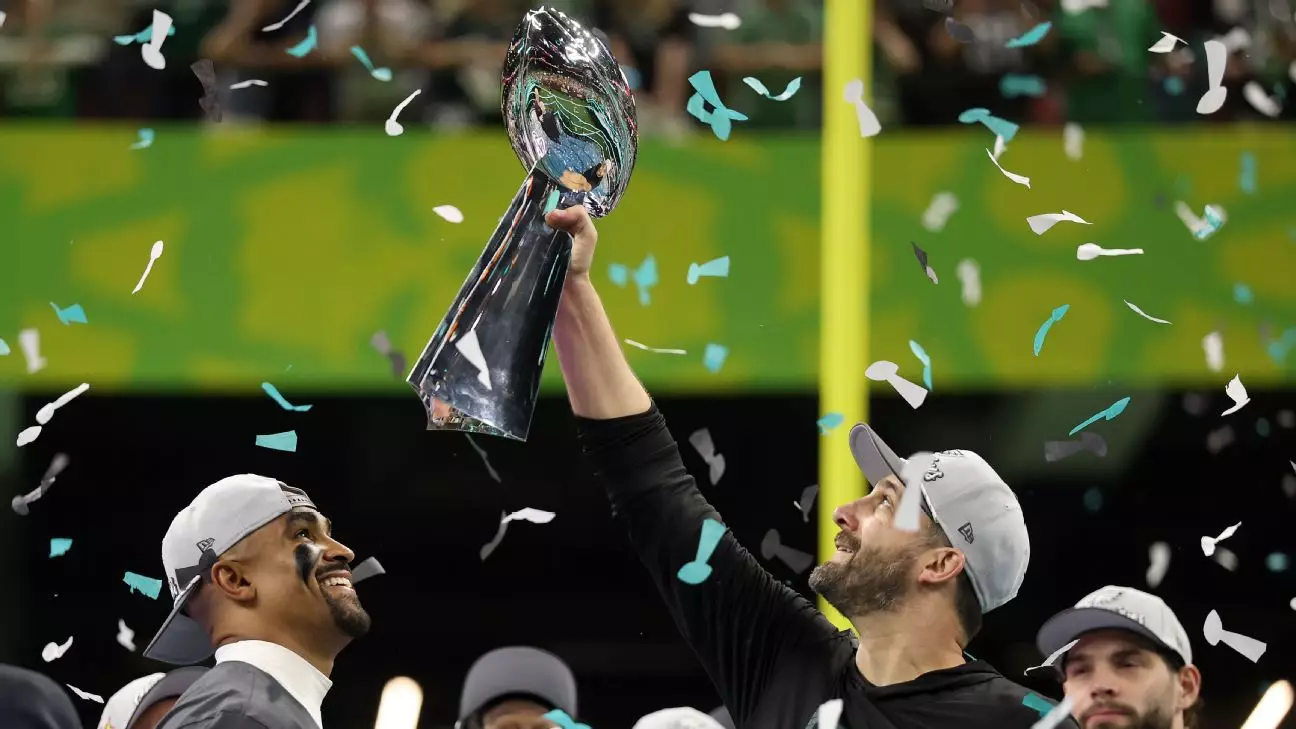The recent Super Bowl has hit new heights in audience engagement, with Fox Sports predicting an astounding average viewership of 126 million across various platforms, including television and streaming. This game, showcasing the Philadelphia Eagles dominating the Kansas City Chiefs with a score of 40-22, epitomizes the growing trend of significant audience numbers. With multiplatform broadcasting via Fox, Fox Deportes, Telemundo, and the free streaming service Tubi, it’s evident that this year’s spectacle succeeded in grabbing the attention of millions. Notably, the audience peaked at an impressive 135.7 million during the second quarter, signaling an invigorated interest among viewers.
Breaking Records Continues
This year’s event marks the second consecutive Super Bowl to shatter audience records—a feat that had seemingly declined in earlier years. The previous year, the Chiefs triumphed over the San Francisco 49ers in an exhilarating overtime finish, averaging 123.7 million viewers across CBS among other networks. Such escalating numbers indicate a resurgence of interest in the Super Bowl, which for years faced challenges linked to the growth of cord-cutting and changing media consumption patterns.
One of the pivotal factors influencing the upward trajectory of Super Bowl viewership is the comprehensive approach taken by Nielsen in measuring audience numbers. For the first time, Nielsen has included out-of-home viewers across nearly all states, enhancing the viewership figures significantly compared to the previous norm that only accounted for major media markets covering about 65% of the population. This methodological shift includes data from smart TVs, increasing the accuracy and depth of understanding regarding audience consumption.
Additionally, the rise of platforms like Tubi, which allows viewers to catch the game for free, has undeniably contributed to the growing numbers. Early statistics suggest that approximately 14.5 million viewers tuned in via streaming services. This sports media evolution showcases a shift towards accessible viewing options, appealing especially to the younger demographic that increasingly favors digital platforms over traditional cable.
The presence of high-profile celebrities such as former President Donald Trump and pop icon Taylor Swift at the game further emphasizes the cultural significance of the Super Bowl. Trump’s attendance as the first sitting president to grace the event, coupled with Swift’s interplay in the NFL — linked to her relationship with Chiefs tight end Travis Kelce — highlights how celebrity culture continues to intertwine with sports. This engagement could potentially draw in fans who might not have been traditionally interested in football, thus expanding the Super Bowl’s audience.
Despite a recent decline in NFL playoff viewership statistics, averaging 35.2 million over the first three weekends, the Super Bowl stands as a testament to the enduring appeal of American football. Although this season saw a dip from last year’s record-breaking context, it’s clear that the Super Bowl remains a pinnacle of sports entertainment with a dynamic and evolving audience base. As the NFL adapts to new trends in viewership and fan engagement, it is poised to enhance the Super Bowl experience and retain its status as a key event in American culture for years to come.

